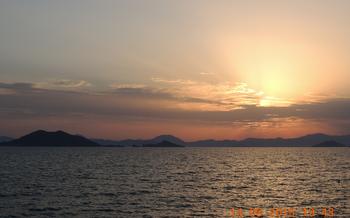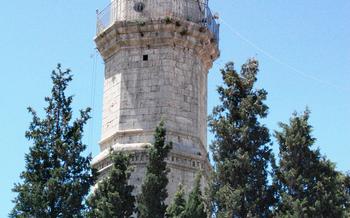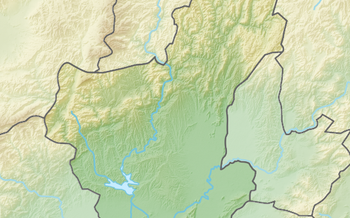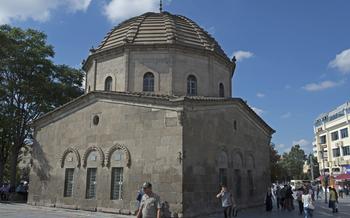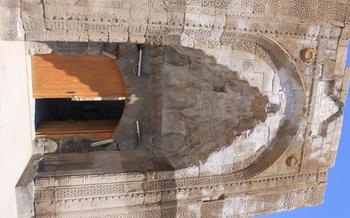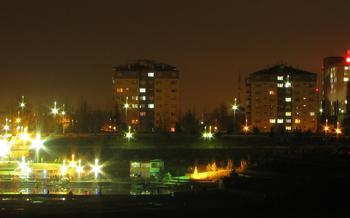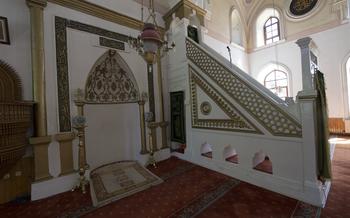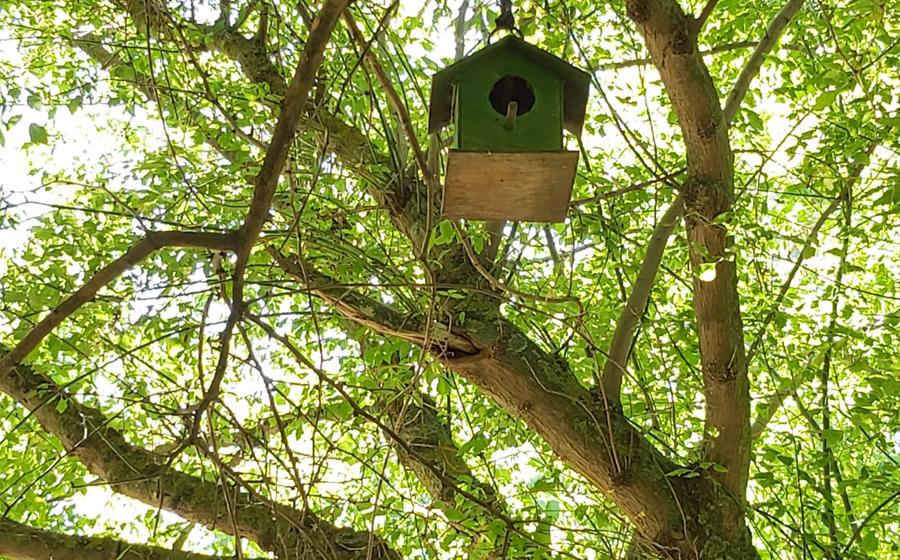
Yeni Cami (New Mosque)
- Historical Significance
- Location and Accessibility
- Architectural Details
- Visiting Hours and Etiquette
- Guided Tours and Audio Guides
- Prayer Services and Religious Observance
- Weekday vs Weekend Experience
- Photography and Social Media
- Combining with Other Attractions
- Shopping for Souvenirs
- Unique Festivals and Events
- Hidden Corners and Secret Spots
- Recommended Tours and Packages
- Insider Tip: Uncovering the Mystic Well
Historical Significance
The Yeni Cami, or New Mosque, in Kayseri, Turkey, holds a significant place in the city's cultural and architectural legacy. Built in the 16th century during the reign of Ottoman Sultan Suleiman the Magnificent, the mosque stands as a testament to the city's rich Islamic heritage and its role as a center of trade and scholarship. The Yeni Cami's architectural grandeur and intricate details reflect the merging of traditional Islamic design with Anatolian influences, making it a unique and captivating example of Ottoman architecture.
Compared to other mosques in Turkey, the Yeni Cami stands out for its size and opulent decoration. Its design incorporates influences from earlier Seljuk architecture, such as the use of pointed arches and geometric patterns, while also showcasing Ottoman innovations like the use of domes and minarets. The mosque's interior is adorned with intricate tilework, calligraphy, and stained glass, showcasing the artistry and craftsmanship of the period.
Location and Accessibility
Finding the Yeni Cami is easy. It stands prominently in the heart of Kayseri, Turkey, at Cumhuriyet Meydanı, Kayseri Merkez/Kayseri. The exact address is Cumhuriyet Meydanı, Kocasinan/Kayseri. Whether you prefer public transportation or self-driving, reaching the mosque is convenient.
For those using public transport, the mosque is well-connected. It is situated close to the Kayseri Bus Terminal, allowing for seamless transfers. Alternatively, you can hop on the Kayseri Tram and alight at Cumhuriyet Meydanı station, which is right next to the Yeni Cami.
For those who prefer driving, there are ample parking facilities in the vicinity. The Kayseri Belediyesi Otoparkı, located just a short walk from the mosque, offers secure and convenient parking options.
While visiting the mosque, take the opportunity to explore the surrounding area. The Kayseri Castle, with its rich history and stunning views, is a must-visit. The Kayseri Museum, housed in a former Armenian church, showcases the region's cultural heritage. These attractions, all within walking distance of the Yeni Cami, provide a comprehensive glimpse into Kayseri's past and present.
Architectural Details
The Yeni Cami, or New Mosque, in Kayseri, Turkey, boasts a remarkable architectural design that sets it apart from other mosques in the region. Its exterior facade showcases intricate stone carvings and decorative elements that reflect the city's rich Seljuk heritage. The mosque's minarets, which soar high above the cityscape, are adorned with beautiful tilework and intricate designs, adding a touch of elegance to the overall structure.
Stepping inside the Yeni Cami, visitors are greeted by a spacious and awe-inspiring prayer hall. The interior is adorned with stunning calligraphy, vibrant tilework, and intricate mihrab (niche indicating the qibla, the direction of prayer). The mihrab is particularly noteworthy for its exquisite craftsmanship and the intricate details that adorn it. The minbar (pulpit) is another highlight of the mosque, featuring intricate carvings and a unique design that complements the overall aesthetic.
The Yeni Cami is a testament to the architectural prowess of the Seljuk era. Its harmonious blend of traditional Islamic elements and local influences creates a truly unique and breathtaking structure that continues to captivate visitors to this day.
Visiting Hours and Etiquette
The Yeni Cami is open to visitors throughout the week, except during prayer times. Visitors are welcome to explore the mosque's stunning architecture and learn about its religious significance. However, it is important to be respectful of the sacred nature of the site and observe appropriate etiquette.
Dress Code: When visiting a mosque, modest attire is expected as a sign of respect. For men, long pants and a shirt with sleeves are appropriate. Women should cover their hair with a headscarf and wear loose-fitting clothing that covers their knees and shoulders.
Behavior: While inside the mosque, visitors should maintain a respectful demeanor. Avoid talking loudly or engaging in disruptive activities. It is customary to remove shoes before entering the prayer hall, as a sign of purity and reverence.
Prayer Times: During prayer times, non-Muslims are requested to remain outside the prayer hall. This is to ensure that the worshippers are not disturbed during their devotions. Prayer times vary throughout the day, so it is advisable to check in advance to avoid any inconvenience.
Guided Tours and Audio Guides
The Yeni Cami offers guided tours for visitors who want to delve deeper into its history, architecture, and religious significance. These tours are conducted by knowledgeable guides who provide insightful commentary and answer any questions you may have.
Tours are available in Turkish and English, and sometimes in other languages upon request. They typically last for about an hour and cover the mosque's exterior, interior, and unique features. Visitors can expect to learn about the mosque's construction, its architectural style, and its role in the community.
The cost of guided tours varies depending on the group size and the language of the tour. It is advisable to book your tour in advance, especially during peak tourist season, to secure your spot. You can book tours through the mosque's office or through a local tour operator.
In addition to guided tours, the Yeni Cami also offers audio guides for visitors who prefer a self-guided experience. These audio guides are available in multiple languages and provide a detailed commentary on the mosque's history, architecture, and religious practices. You can rent an audio guide from the mosque's office for a small fee.
Prayer Services and Religious Observance
The Yeni Cami is a functioning mosque, and its primary purpose is to serve the Muslim community for prayer and religious observances. Visitors should be respectful of this fact and observe proper etiquette while visiting during prayer times.
Prayer times vary depending on the time of year and are announced by the muezzin's call to prayer. During these times, the mosque is busiest with worshippers, and visitors should try to avoid disturbing them. Non-Muslims are welcome to observe prayers from a designated area, usually at the back of the mosque, without participating.
Before entering the mosque, visitors should perform ablution (wudu) to cleanse themselves ritually. Ablution facilities are available at the mosque's entrance. Visitors should dress modestly and avoid wearing revealing or tight clothing.
During prayer times, visitors should maintain silence and not engage in conversations or activities that could distract worshippers. They should also avoid walking in front of people who are praying.
After prayers, visitors are welcome to explore the mosque and admire its architecture and artwork. They should be mindful of the ongoing religious activities and avoid disrupting worshippers engaged in personal prayer or contemplation.
Weekday vs Weekend Experience
The atmosphere at the Yeni Cami can vary depending on whether you visit on a weekday or a weekend. During the week, the mosque is generally quieter, with fewer tourists and worshippers. This can be an ideal time to visit if you prefer a more serene and contemplative experience. You'll have more space to admire the intricate details of the architecture and take photos without crowds.
On weekends, the mosque becomes livelier as more locals and visitors come to pray and explore. The courtyard and prayer hall are often bustling with activity, creating a vibrant atmosphere. While this can be a great opportunity to observe local traditions and customs, it can also mean that the mosque is more crowded, making it harder to move around and appreciate the finer details.
If you're looking for a peaceful and reflective visit, consider visiting the Yeni Cami on a weekday. However, if you're interested in experiencing the mosque's energy and vibrancy, a weekend visit might be a better option.
No matter when you choose to visit, be sure to dress modestly and respectfully, and adhere to the local customs and etiquette. This will ensure that you have a positive and enjoyable experience at the Yeni Cami.
Photography and Social Media
The Yeni Cami is a visually stunning masterpiece that invites photography enthusiasts to capture its grandeur. While taking photos and videos is generally permitted, it is crucial to be respectful of the mosque's sacred nature. Avoid using flash or tripods that may disturb worshippers or disrupt the serene atmosphere. Focus on capturing the intricate details of the architecture, the vibrant colors of the tiles, and the serene ambiance of the prayer hall.
When sharing your experiences on social media, use appropriate hashtags such as #YeniCami, #Kayseri, and #Turkey. This helps promote the mosque and allows others to discover its beauty. Remember to be mindful of privacy and avoid taking photos of individuals without their consent. By respecting local customs and traditions, you can contribute to a positive and enriching experience for all visitors.
Combining with Other Attractions
The Yeni Cami is situated in the heart of Kayseri's historical center, making it an ideal starting point for exploring the city's rich heritage. Just a short walk away, visitors can discover the Kayseri Castle, an imposing fortress that offers panoramic views of the city and the surrounding countryside. The castle is home to several museums, including the Kayseri Archaeological Museum, which houses a fascinating collection of artifacts from the region's ancient past.
For those interested in Islamic architecture, the Hunat Hatun Mosque, built in the 13th century, is a must-see. With its intricate tilework and elegant minaret, it is considered one of the finest examples of Seljuk architecture in Turkey. The Bezirhane, a former caravanserai, now serves as a cultural center and hosts various exhibitions and events throughout the year.
To delve deeper into Kayseri's vibrant culinary scene, visitors can head to the nearby Kapalı Çarşı, a traditional covered market. Here, they can savor the aromas of freshly baked bread, sample local delicacies like Kayseri mantısı (a type of ravioli) and keşkek (a hearty wheat and meat dish), and browse stalls selling spices, textiles, and handmade crafts.
Shopping for Souvenirs
After immersing yourself in the spiritual and historical significance of the Yeni Cami, take the opportunity to explore the vibrant shopping scene in the surrounding area. Kayseri is renowned for its traditional Turkish handicrafts, making it an ideal place to find unique souvenirs and mementos.
When venturing into the local markets, embrace the art of bargaining. It's an integral part of the shopping experience in Turkey, and it's a chance to connect with the friendly vendors. Always approach bargaining with respect and a smile, and don't be afraid to walk away if the price is too high. Your willingness to negotiate will not only save you money but also show your appreciation for the local culture.
Among the must-buy souvenirs are handwoven carpets and kilims, adorned with intricate designs and vibrant colors. These exquisite pieces are not just decorative but also hold cultural significance, representing the rich textile traditions of the region.
For those seeking something more delicate, look for traditional Turkish ceramics. Hand-painted plates, bowls, and vases showcase intricate patterns and vibrant hues, making them perfect for adding a touch of Turkish charm to your home.
Another popular souvenir is the Turkish evil eye, known as "nazar boncuğu." These colorful glass beads are believed to protect against negative energy and bring good luck. You'll find them in various forms, from jewelry to home décor, making them a meaningful and practical gift.
Remember to support local artisans by purchasing directly from them or from reputable shops that prioritize fair trade. This way, you contribute to preserving traditional crafts and ensure that the benefits of tourism reach the community.
Unique Festivals and Events
The Yeni Cami is not just a place of worship; it also serves as a vibrant community hub hosting various festivals and events throughout the year. These celebrations are deeply rooted in Turkish culture and provide visitors with an immersive experience of the country's rich traditions.
One of the most notable events is the annual Mevlid-i Nebi, which commemorates the birth of Prophet Muhammad. During this festival, the mosque is adorned with colorful decorations, and special prayers and recitations are held. Devotees gather to celebrate the Prophet's life and teachings, creating a spiritual and uplifting atmosphere within the mosque.
Another significant event is the Hıdırellez, a traditional spring festival that marks the arrival of warmer weather. On this day, locals gather in parks and gardens, including the mosque's courtyard, to celebrate nature's renewal. Festivities include music, dancing, and traditional games, providing a glimpse into Turkish folklore and customs.
These festivals and events offer visitors an opportunity to witness the vibrant tapestry of Turkish culture and traditions firsthand. By participating in these celebrations, visitors can gain a deeper understanding of the country's heritage and connect with the local community in a meaningful way.
Hidden Corners and Secret Spots
Beyond the main prayer hall and courtyard, the Yeni Cami complex holds hidden corners and secret spots that offer a unique perspective and a tranquil respite from the crowds. One such spot is the small garden located behind the mosque, accessible through a discreet door. This serene oasis features a fountain, colorful flowers, and shady trees, providing a peaceful retreat for contemplation or relaxation.
Another hidden gem is the rooftop terrace, which offers panoramic views of Kayseri's cityscape and the surrounding mountains. Visitors can climb the narrow staircase to the terrace and enjoy the breathtaking vista, capturing stunning photos of the mosque's domes and minarets against the backdrop of the city.
For those interested in history and architecture, the Yeni Cami complex also houses a small museum that showcases artifacts and documents related to the mosque's construction and restoration. This hidden treasure provides a deeper insight into the mosque's significance and its place in Kayseri's cultural heritage.
Exploring these hidden corners and secret spots enhances the visitor's experience of the Yeni Cami, revealing its lesser-known aspects and providing a glimpse into its rich history and cultural significance.
Recommended Tours and Packages
For those seeking a comprehensive experience, guided tours offer an in-depth exploration of the Yeni Cami and other Kayseri landmarks. These tours, often led by knowledgeable local guides, provide historical context, architectural insights, and cultural anecdotes that enhance the visitor's understanding.
Advantages of Guided Tours:
- Expertise: Guides share their knowledge of Kayseri's history, architecture, and culture, offering a deeper appreciation for the city.
- Convenience: Tours eliminate the hassle of planning and transportation, allowing visitors to relax and enjoy the experience.
- Time-saving: Guided tours efficiently cover multiple attractions, maximizing time and ensuring visitors don't miss any highlights.
Booking Recommendations:
- Online Platforms: Websites like GetYourGuide and Viator offer a variety of guided tours in Kayseri, allowing for easy booking and comparison of options.
- Local Tour Operators: Reputable local tour companies provide personalized experiences, often with smaller group sizes and customized itineraries.
- Hotel Concierge: Many hotels offer assistance in arranging guided tours, providing convenience and expert recommendations.
Whether opting for a comprehensive city tour or a focused visit to the Yeni Cami, guided tours offer a rich and immersive experience, ensuring visitors gain a deeper understanding of Kayseri's cultural and historical treasures.
Insider Tip: Uncovering the Mystic Well
Within the Yeni Cami complex lies a hidden gem known as the Mystic Well. This ancient well, believed to date back to the Seljuk era, has a fascinating legend associated with it. According to local lore, the well possesses mystical properties and is said to grant wishes to those who make a heartfelt plea while gazing into its depths. Visitors can discover this hidden treasure in the courtyard of the mosque, near the ablution fountain. For those seeking a moment of tranquility and contemplation, the Mystic Well offers a unique and mystical experience.
